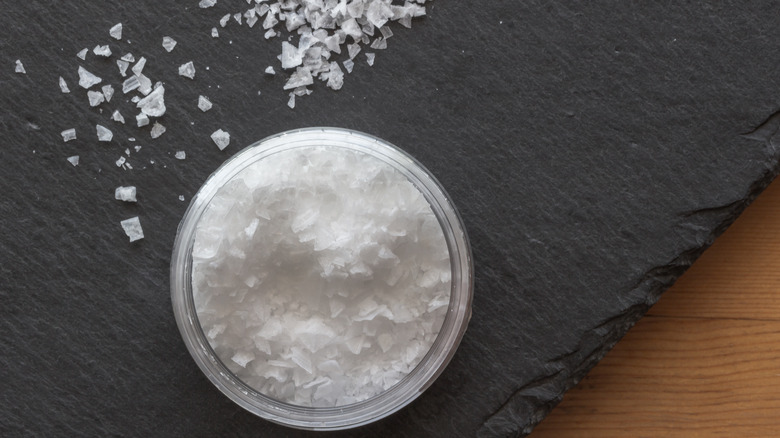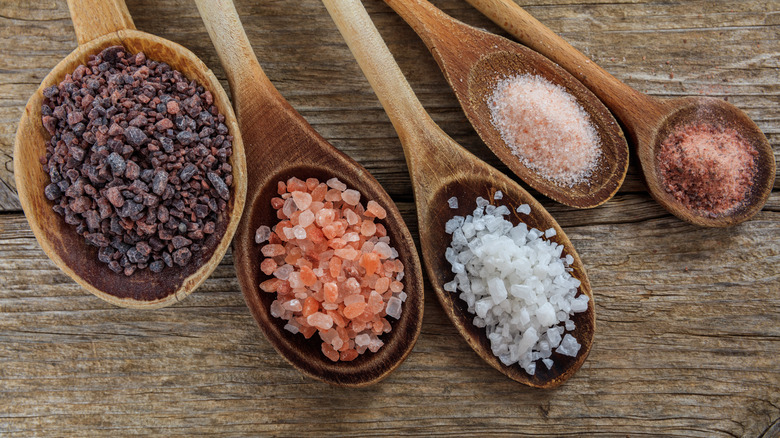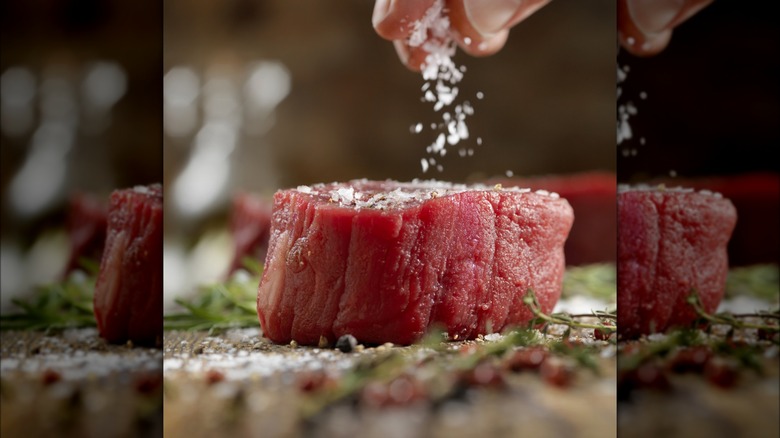Larger Salt Flakes Don't Always Mean A Bolder Taste
Salt is a ubiquitous ingredient that comes in many shapes and sizes. From standard table salt to pink Himalayan salt, it all has the same function, but each variety proves to be a unique asset in whichever dish it embellishes. The size of each granule or flake is a particularly critical flavor factor in salt. Though it would be obvious to assume that larger salt flakes provide stronger flavors, smaller grains of salt actually pack more powerful punches.
Salt is a critical player in the culinary world. Aside from being an essential nutrient in the human body, salt is also an important anti-blandness ingredient in food. It enhances the tastes of different foods by absorbing flavor-diluting moisture in our mouths. This activates the salty receptors on our tongues, making each bite all the more potent in flavor. This is why salt is included in sweet recipes — a sprinkle of salt can take chocolate chip cookies to a whole new level. With the flavoring power of salt, knowing when to use each variety means wielding that power responsibly.
The science of salt size
It may seem counterintuitive that larger flakes of salt give off a less salty flavor; bigger pieces mean more surface coverage on the tongue, right? The science behind the relationship between size and flavor is sound, though. Our taste receptors do not register salt until it dissolves on our tongues. The larger granule size means that it takes longer for the saliva in our mouths to break the salt down. Thus, it dissolves more slowly and releases a less immediate flavor than smaller granules. So instead of hitting your tongue with a bold, salty flavor all at once, the larger crystals release flavor more gradually, providing more steadiness and less intensity.
The larger size is more common among natural varieties of salt, like flaky sea salt, rock salt, and fleur de sel, a hand-harvested French sea salt. While the differences among them are simple, the nuances in taste they provide are complex.
When should you go big?
There are many mistakes you may not realize you're making with salt. And the properties of different varieties make their best uses for cooking different, too. These distinctions are helpful to keep in mind, especially when some salts are more costly than others. Maldon salt, for instance, is considerably more expensive than good old-fashioned table salt, so it would be a shame not to use its properties to your advantage.
Larger flakes of salt dissolve more slowly than the finer grains, which makes them perfect finishing toppers for meat, roasted vegetables, and other cooked foods, as they add a boost of flavor and crunch without immediately disintegrating. Table salt, which will always dissolve quickly thanks to its fine consistency, is best to incorporate into the cooking or baking process, whether added to a batter or sprinkled into a boiling pot of water. Whatever salt you choose to use, use it wisely for a better culinary experience.


